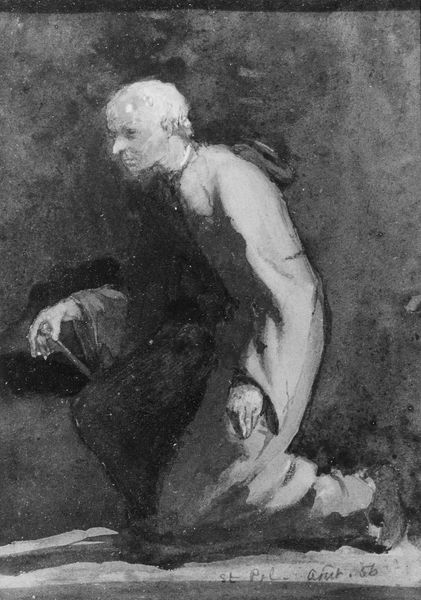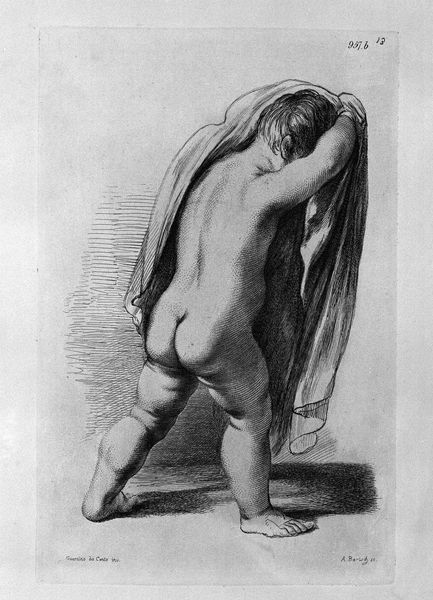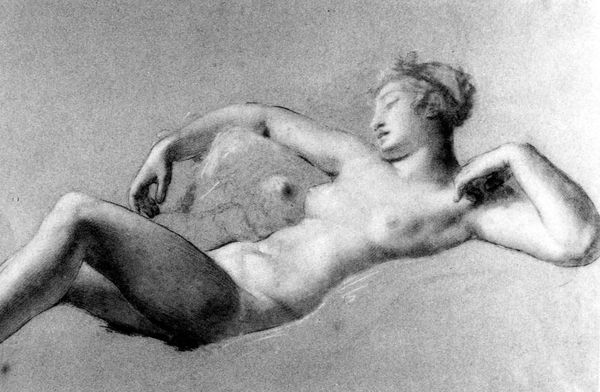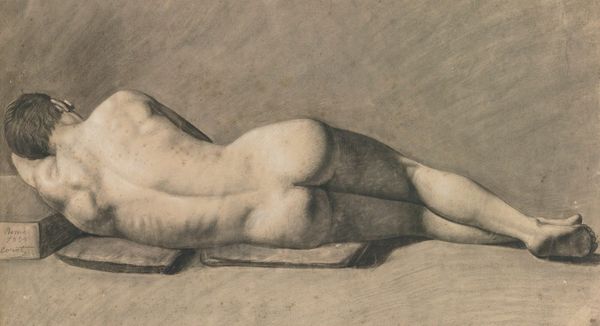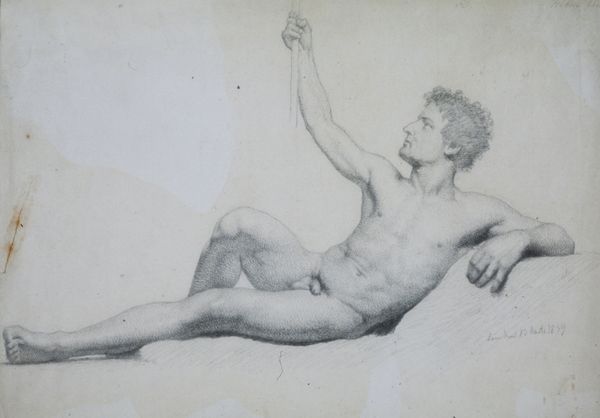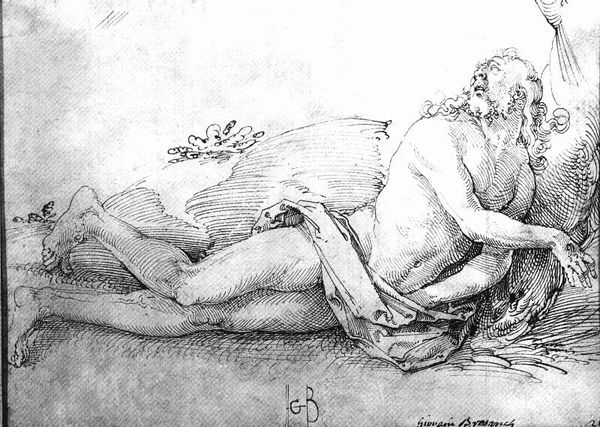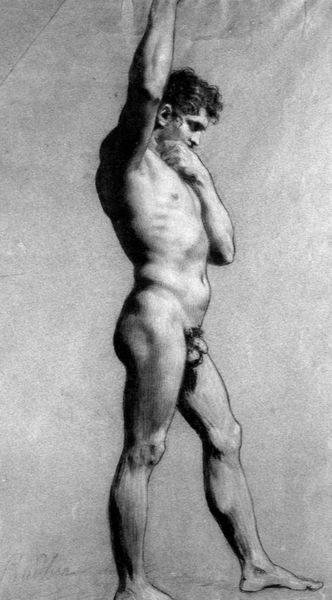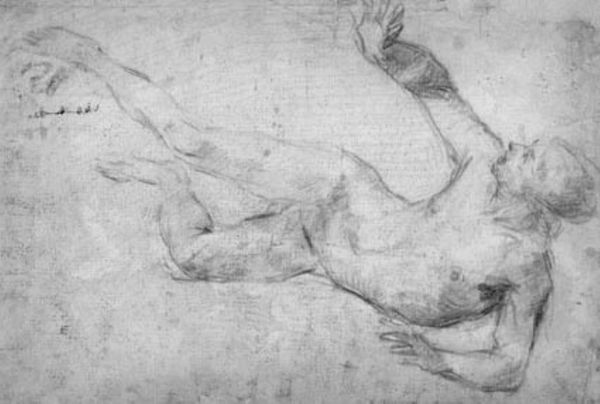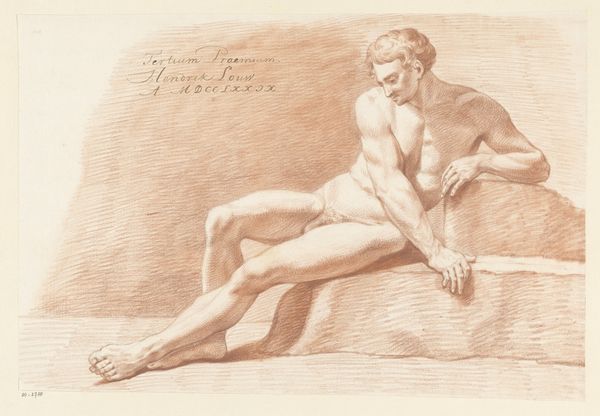
drawing, charcoal
#
drawing
#
charcoal drawing
#
figuration
#
form
#
11_renaissance
#
female-nude
#
charcoal
#
charcoal
#
italian-renaissance
#
nude
Copyright: Public domain
Curator: I find something rather haunting about this drawing. It’s rendered in charcoal, and there’s a pervasive gray tonality that creates a slightly melancholic atmosphere. What do you think? Editor: Indeed. What we’re looking at is Albrecht Dürer’s “Reclining Female Nude” from 1501. It resides at the Albertina Museum in Vienna. It's interesting that you use the word “haunting.” For me, it's almost confrontational. Curator: Confrontational? How so? I'm seeing an aloofness that's less than accessible. Editor: Well, there is something unnervingly dispassionate about her gaze, staring vacantly into the distance, removed. But beyond that, it speaks to larger ideas about objectification and female passivity. The artist has stripped away any sense of narrative. She simply *is*. Curator: An interesting interpretation. From my perspective, I see a rather bold assertion of idealized form. Dürer seems fascinated by the subtle modulations of light and shadow that define the female figure, almost in reverence. We are witnessing an almost archetypal figure, echoing through time. Editor: Respectfully, I must push back on that point. The emphasis on “idealized form” often serves to erase the individual experiences of women throughout history. This nude becomes a canvas for societal projections about gender, sexuality, and power. In a sense, it becomes another symbol within that discourse. The reclining pose, while referencing classical motifs, reinforces notions of female availability. Curator: I hear your concerns and cannot entirely dismiss them. Yet, I'm equally convinced that within this Renaissance composition, we see a revival of classical ideals that have reverberated across Western art, each generation revisiting these tropes through the lens of their unique experiences and concerns. We see this cultural memory continually in play. Editor: And that is perhaps what is most fascinating: that these images carry within them the tensions of continuity and resistance. Each viewing is an act of interpretation, bringing new perspectives to old forms. Curator: It strikes me how images operate in a visual chain across history. Editor: Yes. I agree. Ultimately, this is the complexity that gives an artwork its staying power and timeless intrigue.
Comments
No comments
Be the first to comment and join the conversation on the ultimate creative platform.
